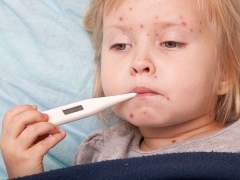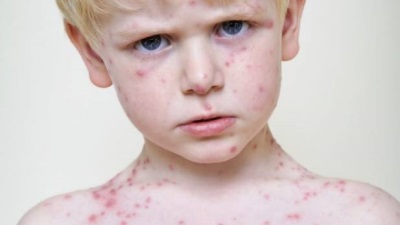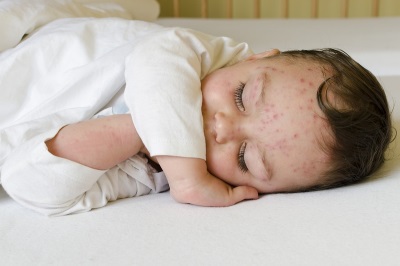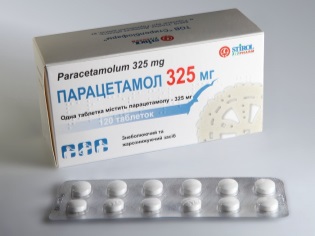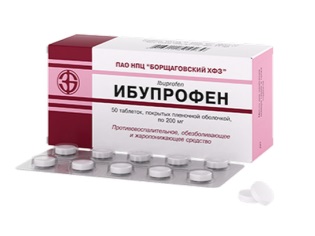Chickenpox temperature
Chickenpox is a very contagious and common infection in children. In most cases, it is diagnosed in children under 10 years of age, but there are also cases of the disease in adolescents and adults.
The most characteristic symptom of such an infectious disease is a bubble rash. In addition, for most people with chickenpox, their body temperature rises. And since any parent may encounter chickenpox in their baby, all mothers are interested in information when fever occurs with chickenpox and whether it is necessary to bring down the temperature during such an infection.
How to catch chickenpox
The causative agent of this infection, called the virus Varicella Zoster, is transmitted from ill children to people without immunity by airborne droplets. In this case, the disease is very contagious and if a person has not been sick before and is not vaccinated against chickenpox, his susceptibility reaches 90-100%, and for infection it is enough to be in the same room with a sick child for 5-10 minutes.
Contagious the sick baby becomes on the last day incubation period. It also releases the virus during the entire period of rash and for another 5 days after the formation of the last vesicles on the skin.
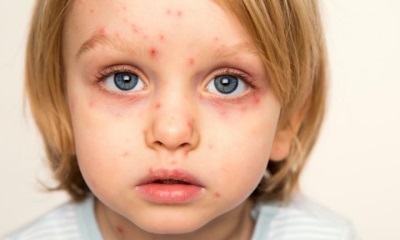
When the temperature rises
The change in body temperature is noticed in a child suffering from chickenpox at the same time as the first rash appears on the skin. Such symptoms appear on the first or second day of the disease after a short prodromal period, during which children complain of headache, weakness, poor appetite, deterioration of sleep, sore throat.
Many moms are interested in whether chickenpox can begin with an increase in body temperature. This situation is quite possible in severe illness, when the temperature of the child rises rapidly, and the rash appears only after a while.
As a rule, with the advent of new bubbles on the body, the temperature rises again. Such a fever is undulating, so parents should not be frightened if the temperature during the illness rose again, for example, on the fourth day of the disease along with the next appearance of "fresh" vesicles on the skin.
Could it be with fever but no rash
Rash and fever are the most characteristic symptoms of chicken pox, and in most cases they occur together.
Moreover, the severity of the rash and the temperature reaction of the body have a definite connection. The more bubbles on the body - the higher the fever.
Only in rare cases, there is no rash in chicken pox or it is represented by single elements, so the situation with fever and the absence of rash with chickenpox is practically not encountered.
What is the temperature at chickenpox
The numbers on the thermometer with chickenpox are affected by the severity of the disease and the state of immunity of the child.
There are such options for fever with chickenpox:
- A slight increase in temperature to 37.5-38 ° C with a light current.In some babies with a mild form of chickenpox, body temperature may remain within the normal range.
- Temperature rise to 38-38.5 ° С with moderate chickenpox.
- Fever with rates of 39–40 ° C for severe infection.
How many days does the temperature keep
- If a child has a mild form and body temperature has increased to 37.5 ° C, the duration of such a symptom is usually short. The very next day, or from 2-3 days of illness, the indicator on the thermometer becomes normal.
- With moderately severe chickenpox, the duration of fever for most children is from 2 to 4 days. At 4-5 days of illness, body temperature drops, and new vesicles no longer appear.
- If the disease is severe and the temperature has risen to threatening numbers, the duration of the fever period can reach 7 days.
Churn the temperature with chickenpox
The issue of reducing body temperature with medicines for chickenpox needs to be addressed based on the severity of the disease and the age of the patient.
If a child has caught the infection at the age of 2-10 years and its course is mild (the temperature is elevated below + 38 ° C), no medication is needed to reduce the body temperature. This fever is a natural reaction of the child's body to the penetration of the virus and confirms that an active fight with the pathogen is taking place in the baby’s body.
How to beat down the heat
For a child suffering from chickenpox to choose a drug that will help reduce the temperature, it is best together with a pediatrician. The doctor will take into account the age of the small patient and the presence of other health problems. It is especially important to give medicine in time for the risk of febrile seizures and diseases of the cardiovascular system.
Usually, children are prescribed one of these antipyretic drugs:
- Paracetamol. It is considered safer and is prescribed for children older than 1 month. This drug begins to act immediately (40-60 minutes after ingestion) and the duration of action of this drug is small (maximum 4 hours).
- Ibuprofen This remedy has not only antipyretic, but also anti-inflammatory effect. Such a drug acts longer than paracetamol (up to 8 hours), but more often causes side effects and resolved from 3 months of age.
What to do if it does not go astray
If you have given the child a fever reducing agent, and the temperature has remained high and the general condition of the child is worsened, you should consult a doctor. It is also important to show the child to the pediatrician in time if the temperature with chickenpox lasts a long time, for example, there is still a 10 day illness or re-rising after several days of normal values.
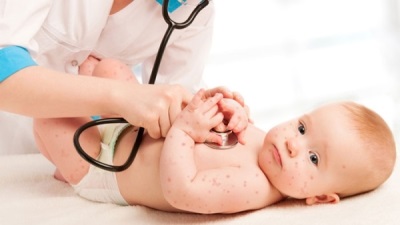
You can learn more about chickenpox from Dr. Komarovsky’s program.
